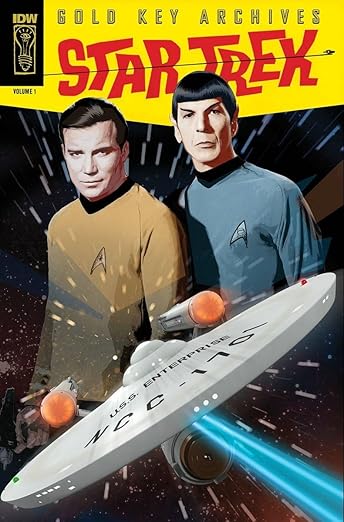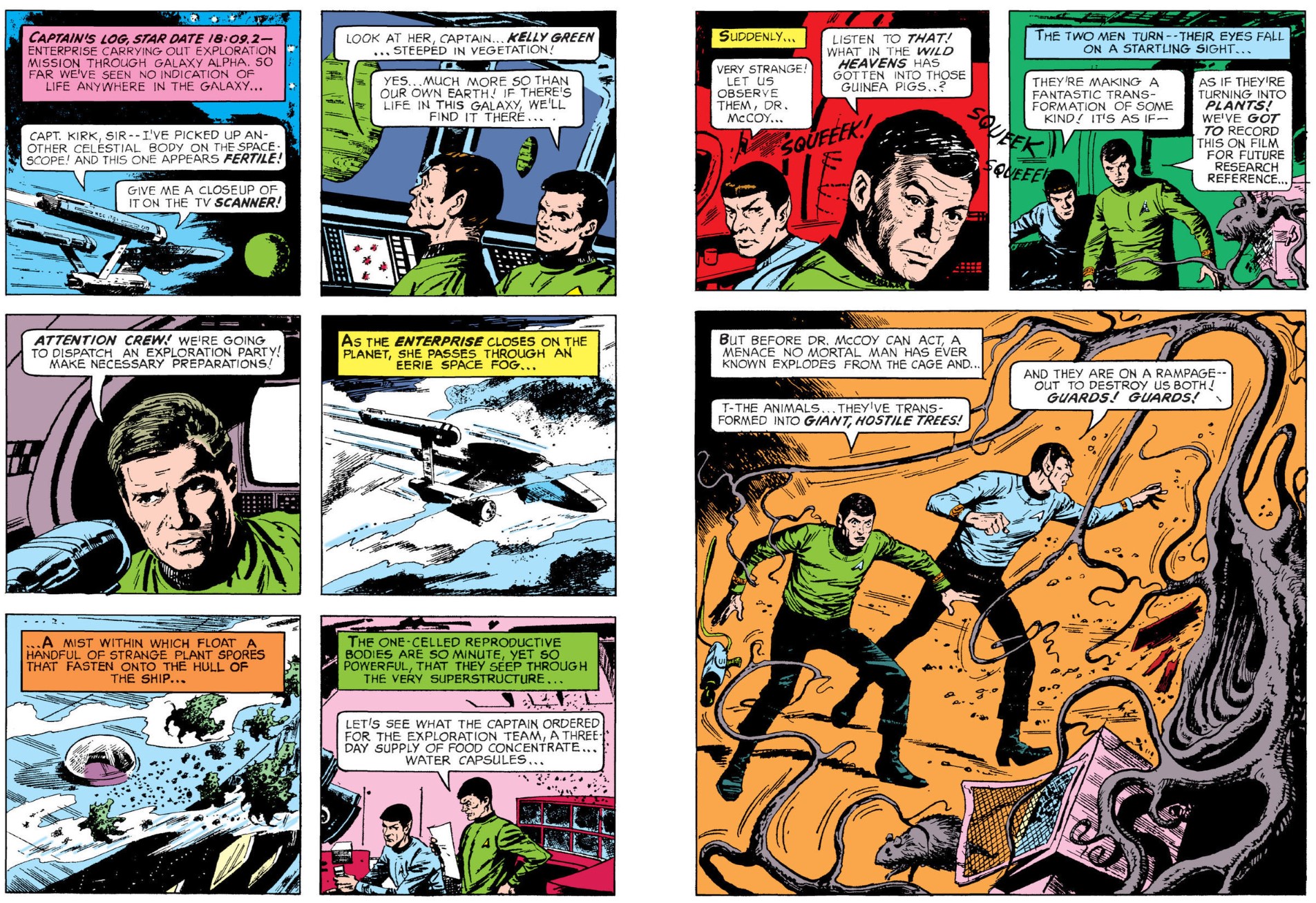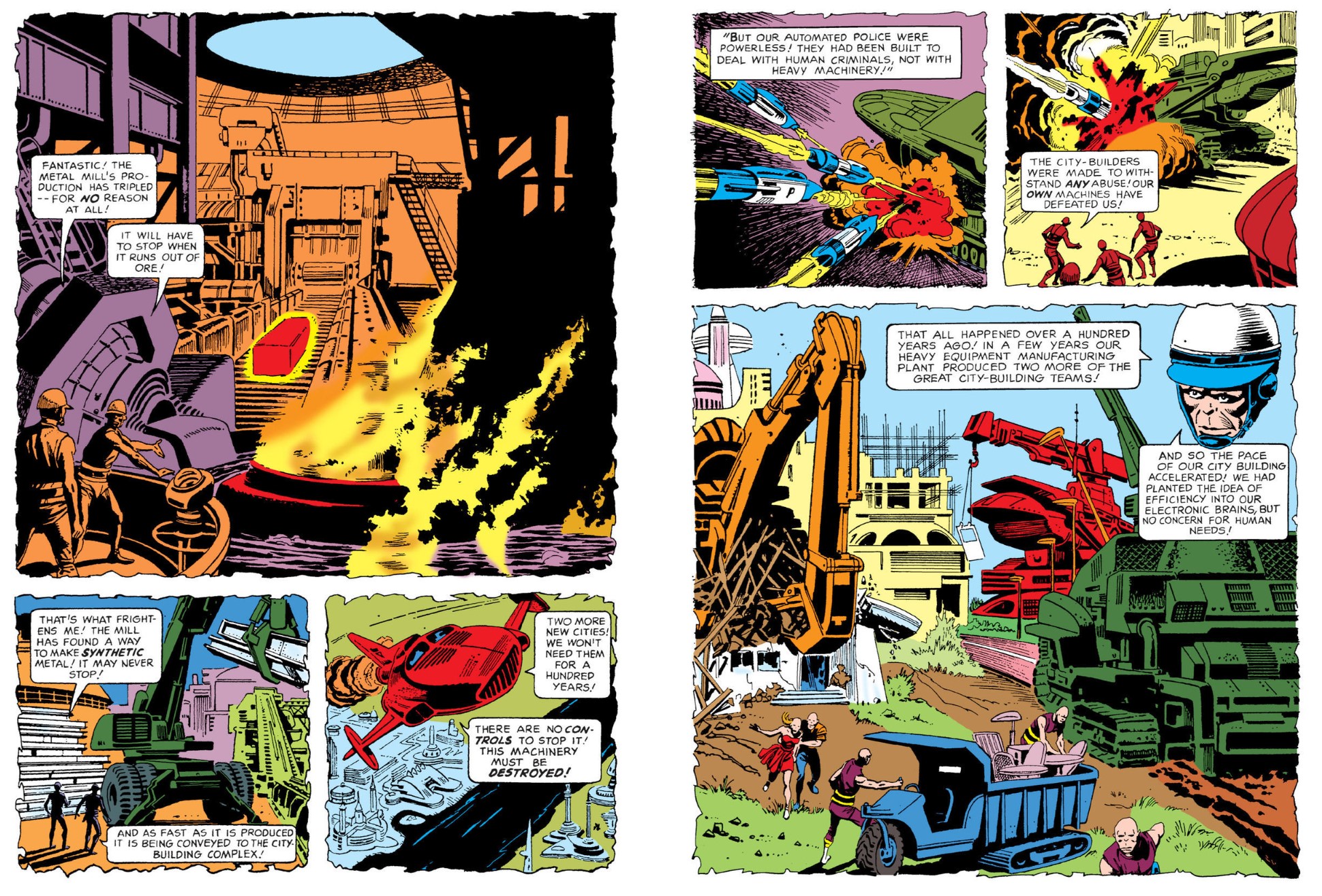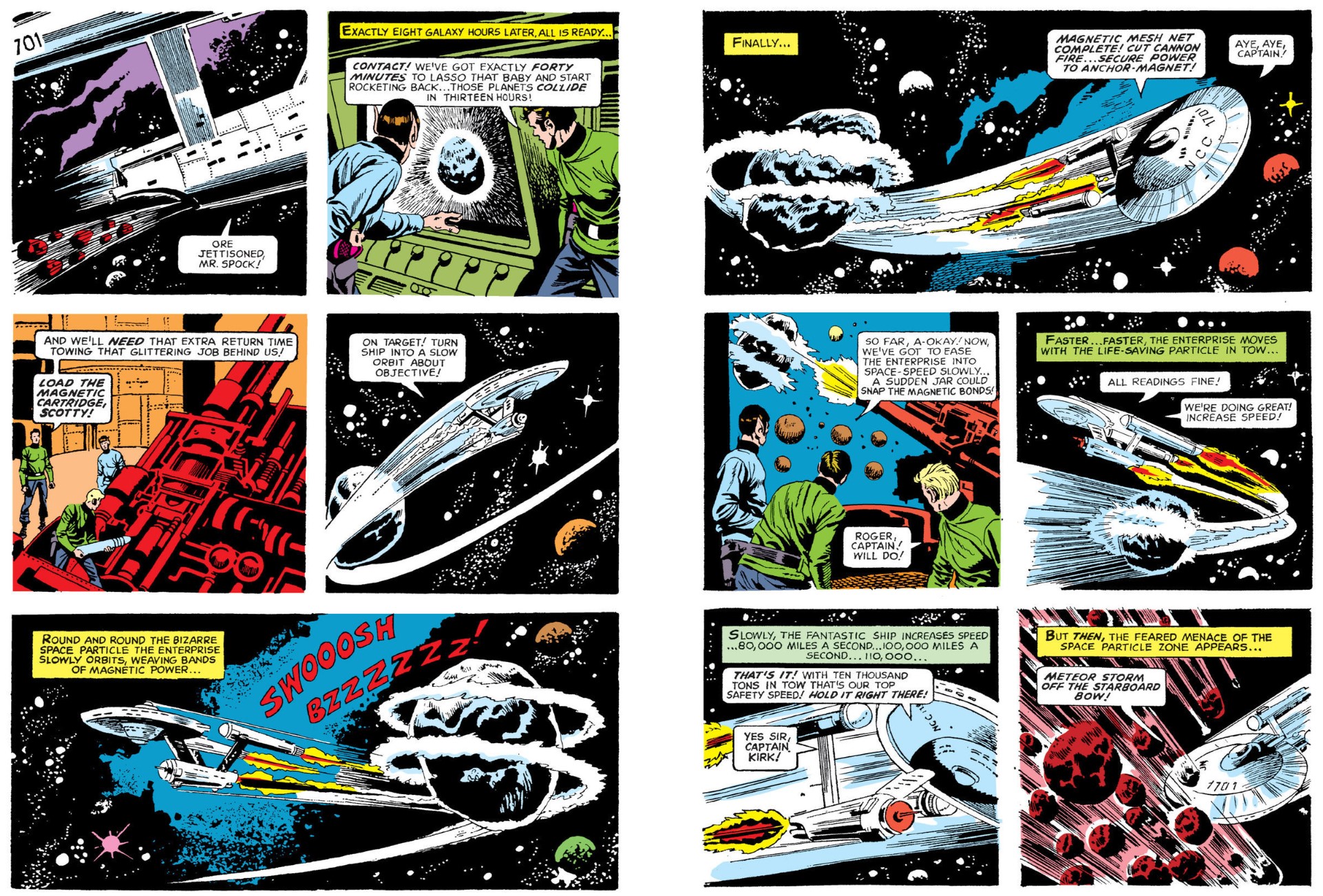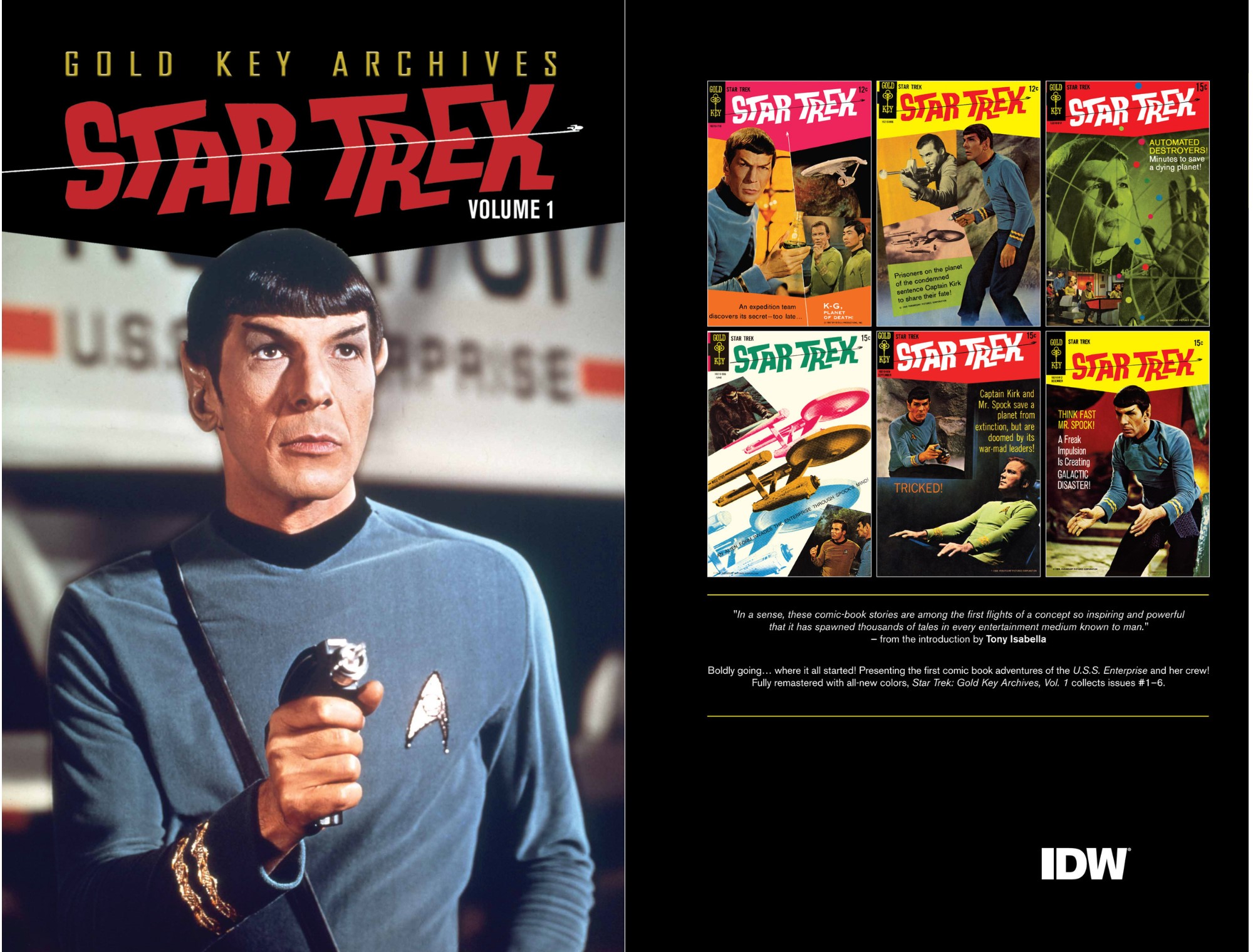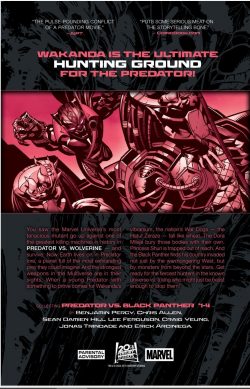
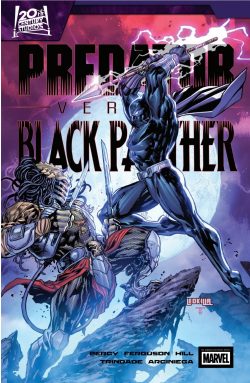
By Benjamin Percy, Chris Allen, Sean Damien Hill, Lee Ferguson, Craig Yeung, Jonas Trindade, Erick Arciniega, VC’s Travis Lanham & various (20th Century Studios/ MARVEL)
ISBN: 978-1-3029-6034-6 (TPB/Digital edition)
Win’s Christmas Gift Recommendation: Purely Perfect Irresistible Primal Pandering… 8/10
Although I’ve striven long and hard(ish) to validate and popularise comics as a true art form here and elsewhere, it’s quite hard to escape one’s roots, and every so often the urge to revel in well-made, all-out mindless violence and crass commercialism confidently assuming it is what the reader wants just takes me over. If there’s a similar little kid inside you, this unchallenging, no-brainer team-up property might just clear the palate for the next worthy treat I’ll be boosting…
Predator was first seen in the eponymous 1987 movie and started appearing in comic book extensions and continuations published by Dark Horse with the 4-issue miniseries Predator: Concrete Jungle spanning June 1989 to March 1990. It was followed by 39 further self-contained outings and (by my count thus far) 14 crossover clashes ranging from Batman and Superman to Judge Dredd, Archie Andrews and Tarzan, keeping the film franchise alive and kicking whilst actual movie iterations waxed and waned. We’ll no doubt be adjusting those figures soon enough, but two of the most recent involve stalwart comic stars with their own movie machismo: Wolverine and Black Panther…
The core premise started simply enough. For countless millennia a race of beings that prize hunting, trophy-taking and bragging rights/“honour” over all else have been using Earth – and by extension other worlds and civilisations – as private sports preserves. These “Yautja” – who prefer to stalk hotter climes – come to our world expressly to test themselves and to thrill to the heady rush of killing animals…
The Black Panther rules over a fantastic African paradise which isolated itself from the rest of the world millennia ago. Blessed with unimaginable resources – both natural and not so much – the nation of Wakanda developed unhindered by European imperialism into the most technologically advanced human nation on Earth. It has never been conquered, with the main reason being an unbroken line of divinely-sponsored warrior kings who safeguard the nation. The other is a certain miraculous super-mineral found nowhere else on Earth…
In contemporary times that chieftain is (usually) T’Challa: an unbeatable, physically perfect feline-empowered strategic genius dividing his time between ruling at home and serving abroad in superhero teams such as The Avengers and The Ultimates beside costumed champions like Iron Man, Mr. Fantastic, Thor, Captain Marvel and Captain America. However, in this version he’s a proud and defiant isolationist…
Acclaimed as the first black superhero in American comics and one of the first to carry his own series, the Black Panther’s popularity and fortunes have waxed and waned since he first appeared in the summer of 1966. As originally created by Jack Kirby & Stan Lee T’Challa, son of T’Chaka was an African monarch whose secretive kingdom is the only source of vibration-absorbing wonder mineral Vibranium. The miraculous alien metal – derived from a fallen meteor which struck the continent in lost antiquity – is the basis of Wakanda’s immense power and prosperity, allowing the isolationist nation to become one of the wealthiest and most secretive on Earth. When T’Chaka was assassinated by white invader Ulysses Klaw, these riches enabled the young king to radically remake his country, even more so after leaving Africa to fight as an Avenger.
For much of its history Wakanda was a phantom, utopian wonderland with tribal resources and people safeguarded and led since time immemorial by a warrior-king deriving cat-like physical advantages from secret ceremonies and a mysterious heart-shaped herb. This has ensured the generational dominance of the nation’s Panther Cult and Royal Family. The obsessively secured “Vibranium mound” guaranteed the nation’s status as a clandestine superpower for centuries, but recent times increasingly saw Wakanda a target of incursion, subversion and invasion as the world grew ever smaller. Here however, in a tale notionally removed from mainstream continuity T’Challa and his sister Princess Shuri discover the nation’s borders are not, nor ever have been totally secure…
Scripted by Bejamin Percy, this trans-galactic saga of families at war sees sibling rivalry lead to civil conflict in one of the dominant clans of the Yautja. One prince, physically far weaker than his brother and even missing a limb, survives only because his superior brother heaps further shame upon him, constantly proving to their sire how unworthy the weakling truly is.
A life of woe and degradation seems likely to end in inconceivable agony and shame, but the pariah pursues an ancient prize trophy: a sample of a wonder element dubbed “godmetal” that has utterly reshaped his prospects. The treasured token of a long-ago hunt, it comes from favoured preserve Earth where some of the indigenous prey have fabulously prospered and gained advantage from it. There, they call it Vibranium and he will have it…
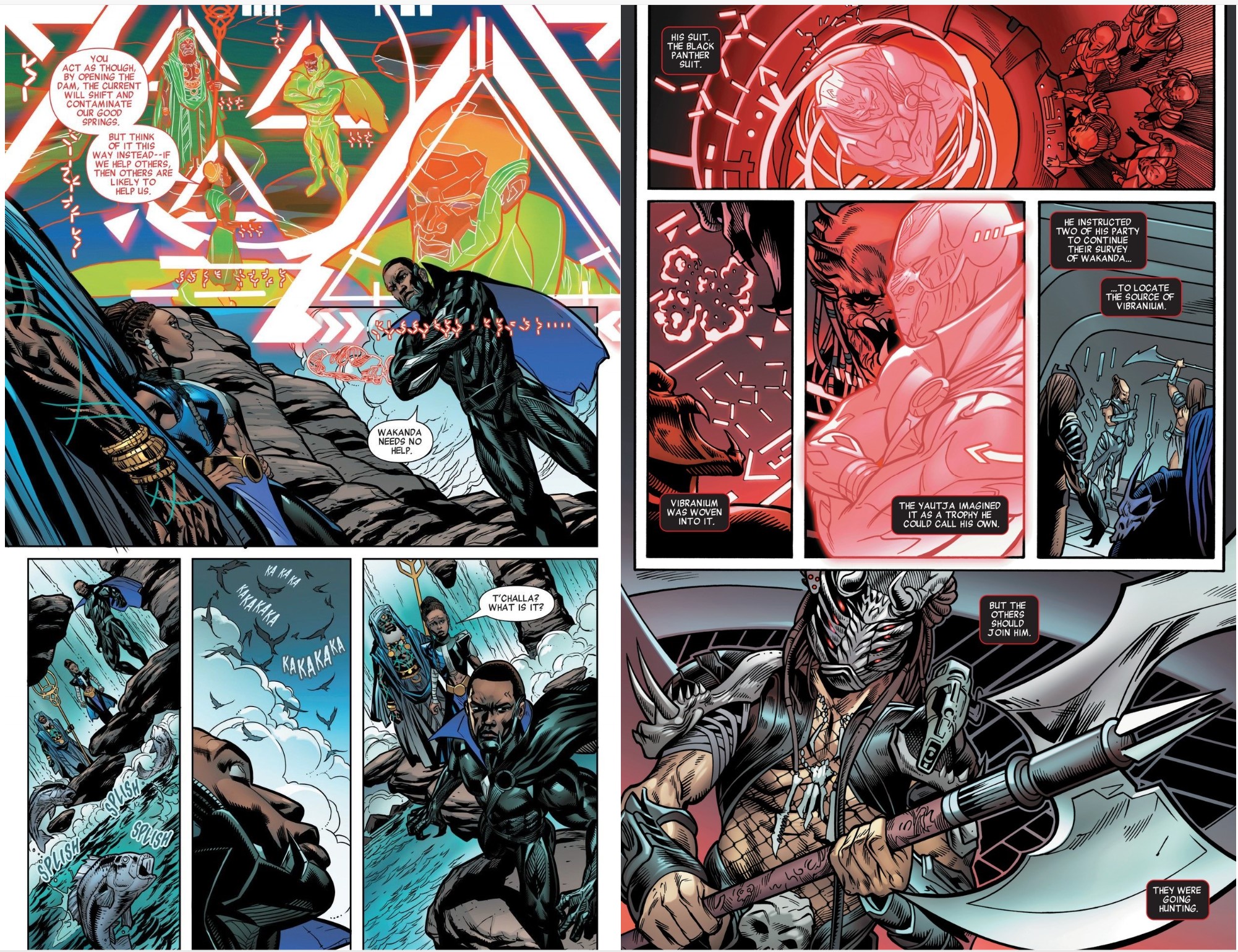
Although they’re indisputably barbaric and revel in getting their clawed hands dirty, Yautja are an ancient galaxy-spanning species and the outcast instantly finds new ways to use the miracle metal. Escaping to Earth with his surviving faithful retainers he goes about securing the only known source of his salvation…
On Earth, Black Panther T’Challa bickers with smugly-superior Shuri during a live fire training exercise pitting his bodyguard Dora Milaje against male warrior elite the Hatut Zeraze and everybody against the King. Although good natured, the competition is fierce but everything changes when the renegade arrives and infiltrates. Deftly penetrating the country’s electronic and advanced energy defence shields screening Wakanda from the rest of humanity, the Yautja takes command of human mechanical systems and begins collecting trophies: not just skulls and spines of the greatest warriors in the region, but most crucially all the Vibranium and ordnance the prey have developed from it…
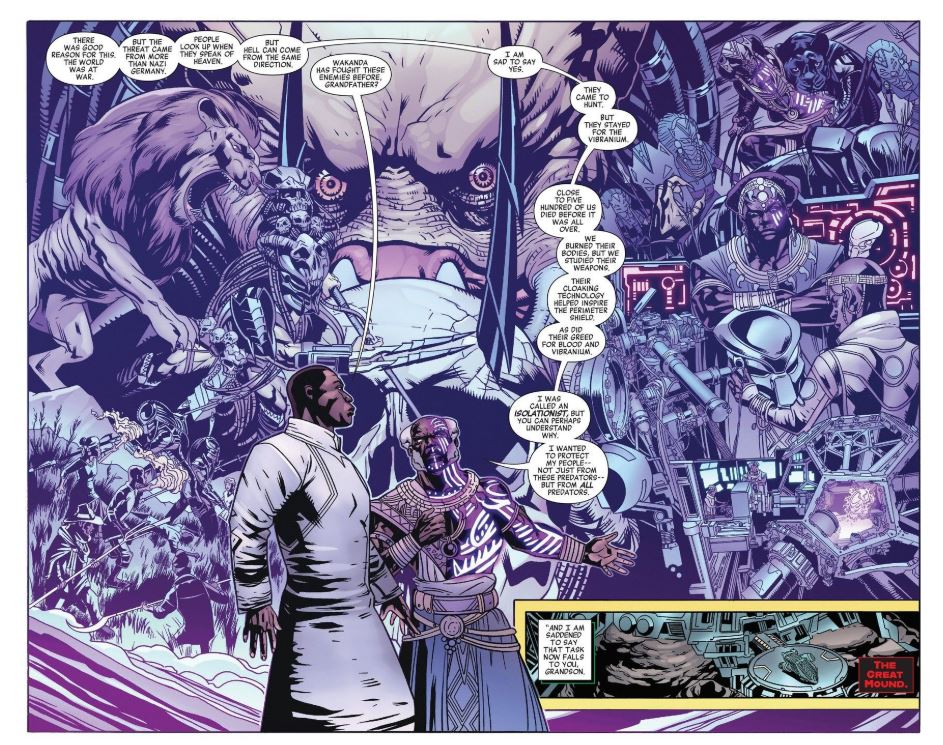
With Wakanda locked down and T’Challa hard-pressed just to survive. it’s a good thing Shuri never lost trust in the ancient mystical ways (or contact with extremely gifted spirit medium Maji Kina), and is, moreover, open to a surprise offer of assistance from visiting American superhero Sam Wilson, the high-flying high-tech Falcon…
As the alien renegade musters its newfound resources and Wakandans bloodily strive on, stubborn T’Challa consults his dead ancestors to learn how his grandfather Azzuri the Wise dealt with the last visitation before all the scattered human resistors convene to end the threat… if only for now…
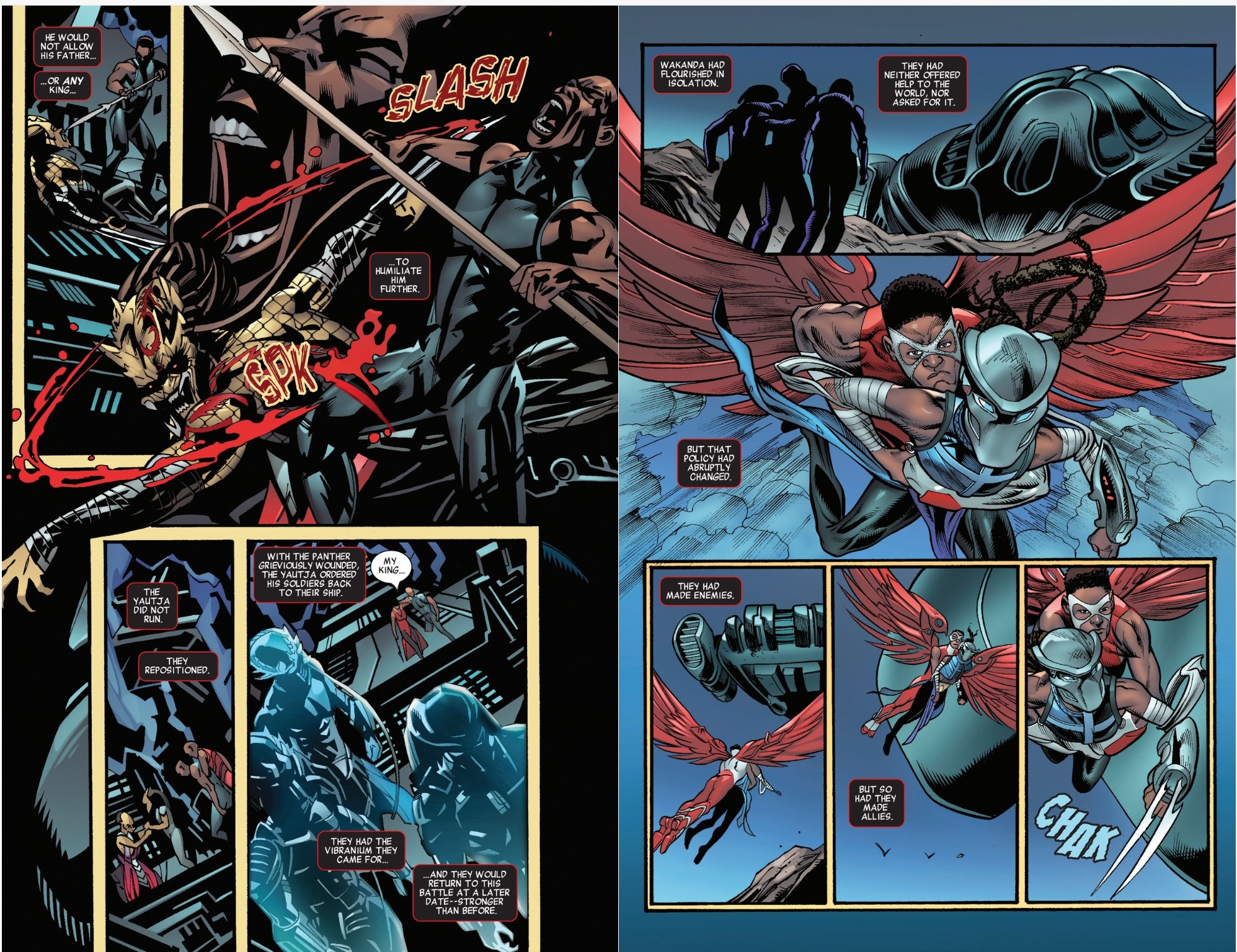
Savage and bloody but with room for character moments and even gallows humour, the tale is visually detailed by Chris Allen, Sean Damien Hill, Lee Ferguson, Craig Yeung, Jonas Trindade and coloured by Erick Arciniega with letters by VC’s Travis Lanham. Ultimately, plot-wise there’s not much to this – and a good thing too as it would get in the way of the action…
Like the films, what’s on offer is a thinly disguised excuse for mindless, cathartic violence and rollercoaster thrills and chills, and it’s all accomplished with compelling style and dedication. Wild, grim, edgy and utterly entertaining, the original 4-part miniseries came with a variety of cover choices and capping the furious fun is an extended gallery with gory stories enshrined in single visual vistas of line, colour, paint & pixels, courtesy of Ken Lashley & Juan Fernandez – AKA Ledkilla, Edwin Galmon & Federico Blee, Chris Allen, Leinil Francis Yu & Romulo Fajardo Jr., Pete Woods, Philip Tan, Mark Morales & Frank Martin, Skottie Young, Doaly, Rahzzah, Rose Besch, Andrei Bressan & Ceci De La Cruz, Junggeun Yoon and Mateus Manhanini.
Hunt this down for simple fun and pure escapist shocks and shudders.
© 2025 20th Century Studios. Marvel, its characters and its logos are ™ Marvel Characters, Inc.
On this day in 1987 master raconteur screenwriter and occasional comics author Alfred Bester died. His visual feasts included lots of DC comics stars such as the first Green Lantern, and newspaper strips The Phantom and Mandrake the Magician. You should consider yourself an incomplete human if you haven’t read The Demolished Man, The Stars My Destination (aka Tiger, Tiger) and Who He?

